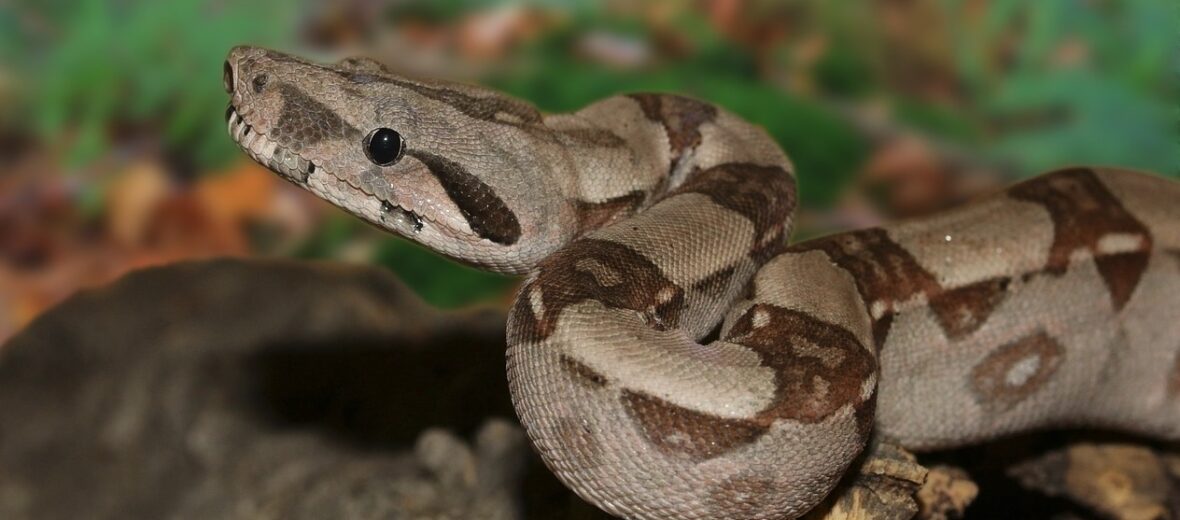
The boa constrictor is just that a constrictor. They aren’t venomous as they have evolved beyond the need for venom and instead developed strong muscles that are used to squeeze the life out of prey animals. Their dagger-like teeth all point backwards to their throats and are meant not for chewing, but rather for holding on to prey as they squeeze their meal, with a crushing force, till it dies. Then the prey is swallowed head first.
First the Stats…
Scientific name: Boa constrictor
Weight: Up to 33+ lbs.
Length: Up to 9.8 feet
Lifespan: Up to 30 years
Now on to the Facts!
1.) Like other snakes, boas use their tongues, in part, for locating food. They flick their tongues out and capture small molecules in the air and bring those molecules into their mouth and sample them with a special organ on the roof of their mouth called a Jacobson’s organ. This organ gives a readout of their surroundings.
2.) Boa constrictors are “ovoviviparous”, meaning their eggs stay inside the mother’s body until they’re ready to hatch, after which the female gives birth to live young. Then the eggs are reabsorbed by the female and the calcium with them.
3.) They don’t only kill by suffocation, but also by keeping blood from flowing to the brain causing ischemia and death.
4.) Boas still have 2 lungs, where other snakes have only 1.
5.) They also are considered primitive snakes as they still possess vestigial limbs, known as pelvic spurs. They don’t use these limbs for locomotion, but rather for battling other males and for mating purposes. These limbs are located on either side of the cloaca (cavity at the end of the digestive tract for the release of excrement).
But wait, there’s more on the boa constrictor!
6.) Boas mainly feed on small mammals, like rodents. This helps keep the population of rodentia down, in the wild.
7.) Boa constrictors, like other snakes, continue to grow their entire lives. Each time they shed their skin, they grow.
Did you know…?
By eating opossums and rodents, boas help regulate their populations, therefor lowering the potential transmission of the sand flea spread “leishmaniasis” (a disease that affects several internal organs, usually spleen, liver, and bone marrow; as well as causing skin lesions) to humans.
8.) Like all constrictors, these snakes swallow their prey head first and whole.
9.) There are at least 9 known subspecies of boa constrictors, according to the ADW.
10.) The average 5.5 foot boa can constrict at over 4 lbs. of pressure per 1 inch of snake. That equates to roughly 240 lbs of pressure on it’s prey.
Now a Short Boa Constrictor Video!
Also, check out the Critter Science YouTube channel. Videos added frequently!
Want to suggest a critter for me to write about? Let me know here.



